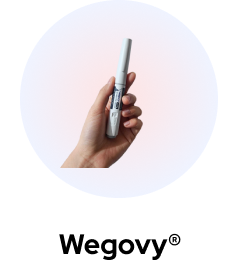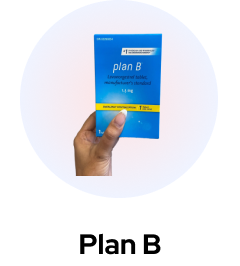Rogaine, originally developed to treat high blood pressure, has found a second life as a groundbreaking treatment for hair loss. This guide thoroughly explains how to use Rogaine for Women to combat hair thinning and baldness effectively.
From the science behind its active ingredient, minoxidil, to detailed application techniques and managing potential side effects, this content covers everything needed to start and maintain a Rogaine regimen successfully.
Whether you’re new to Rogaine or looking to optimize your current treatment, these insights will help you confidently navigate your journey toward healthier hair.
What Is Rogaine?
Rogaine, initially developed as a treatment for high blood pressure, was serendipitously found to promote hair growth, leading to its repurposing as a hair loss treatment. This discovery changed the landscape of non-surgical hair restoration when researchers noticed hair regrowth as a side effect in patients using the medication for hypertension. Today, Rogaine is widely recognized and used specifically for its capabilities to combat baldness and thinning hair.
- Minoxidil: This is the active ingredient in Rogaine. It works to enhance hair regrowth and is effective in treating pattern baldness in both men and women.
- Alcohol and Propylene Glycol: These are solvent and carrier components that help minoxidil penetrate the scalp effectively.
On a cellular level, Rogaine primarily functions by opening up potassium channels within hair follicles, which helps to promote hair growth by increasing blood circulation around hair follicles. This action supplies more nutrients and oxygen to the hair follicle, stimulating hair’s anagen or growth phase.
- Anagen Phase: Rogaine extends this phase, allowing hair to grow longer and thicker.
- Catagen Phase: The impact of the transition phase is minimal, but healthier follicles may delay hair follicle regression.
- Telogen Phase: Rogaine can help shorten this phase, accelerating the transition back to the anagen phase, thereby promoting a quicker hair cycle restart.
- Exogen Phase: While not directly affected, healthier follicles might lead to reduced hair fall during this phase.
If you’re exploring treatments for hair thinning or loss, gaining a broader understanding of this condition is crucial. Dive deeper into the causes, symptoms, and treatments of hair loss on our comprehensive page about hair loss. This resource offers valuable insights that can help you make informed decisions about your hair care regimen.
When You Should Apply Rogaine
To ensure Rogaine’s effectiveness, it should be applied to a clean, dry scalp to facilitate optimal absorption. The ideal time for application is during the morning and evening routines, allowing the solution or foam ample time to dry and act upon the scalp without interference from other products or activities.
- Morning: After your regular hair washing routine, apply Rogaine to the dry scalp, and allow it to dry completely before styling your hair.
- Evening: Apply it at least an hour before bedtime to ensure it has dried fully and won’t rub off on bedding.
How to Use Rogaine as a Woman
Understanding and adhering to the proper usage instructions provided with Rogaine products is crucial for safety and effectiveness. Ensuring you follow these guidelines can significantly affect the outcome of the treatment.
Before beginning treatment with Rogaine, prepare the scalp and ensure optimal conditions for its application:
- Perform a Patch Test: To check for any allergic reactions before applying it widely.
- Ensure Scalp Cleanliness: Wash your hair and scalp thoroughly to remove any residues that might inhibit the absorption of the treatment.
Can Rogaine Trigger Any Allergic Reactions?
Rogaine contains ingredients like propylene glycol, which can cause skin irritation or allergic reactions in some individuals. Common signs of an allergic reaction include itching, redness, or a rash on the scalp.
- Consult a Healthcare Provider: If you suspect an allergic reaction, stop using the product and consult with a healthcare professional.
- Follow Medical Advice: Depending on the severity of the reaction, your doctor may suggest an alternative treatment or measures to mitigate the allergic response.
Tips for Best Results
To maximize the effectiveness of Rogaine, consider these additional tips:
- Avoid Hair Styling Products Immediately After Application: Let Rogaine dry completely before applying any styling products.
- Consistent Application Schedule: For optimal results, apply Rogaine twice daily to maintain the drug’s concentration in the scalp consistently.
How to Apply Women's Rogaine
Applying Women’s Rogaine is a straightforward process that, when done correctly, can significantly contribute to hair regrowth.
It’s important for women to understand the nuances of applying Rogaine to ensure it is as effective as possible.
The application process is designed to maximize scalp absorption and integrate seamlessly with women’s hair care routines.
Step 1: Prepare Your Scalp
Preparing your scalp properly is a critical first step in applying Women’s Rogaine effectively:
- Choose the Right Time: Apply Rogaine when you have time to let it dry naturally, ideally in the morning or several hours before bed.
- Clean Your Scalp: Wash your hair with a mild shampoo to remove any oils and residues, ensuring the scalp is clean and dry.
- Dry Your Hair Thoroughly: Before applying Rogaine, make sure your hair and scalp are completely dry to enhance the treatment’s absorption.
- Section Your Hair: For better scalp exposure, part your hair in several rows to maximize the area where the foam will be applied.
Step 2: Apply ROGAINE Foam
Applying the foam properly is crucial for effective treatment:
- Dispense the Foam: Shake the can well, turn it upside down, and dispense about half a capful of foam onto a non-absorbent surface like a dish.
- Apply Directly to Scalp: Use your fingers to apply the foam directly to the scalp in the areas where hair is thinning.
- Be Gentle: Avoid aggressive rubbing; apply the foam with gentle motions to prevent further hair breakage, especially important for women with longer hair.
Step 3: Massage and Style
Massaging and styling your hair after application can help enhance Rogaine’s effectiveness:
- Gentle Massage: Use your fingertips to gently massage the foam into the scalp to distribute the medication evenly.
- Style as Usual: Once the Rogaine has dried, you may style your hair as usual. Use gentle styling techniques and avoid high heat and pulling styles which can exacerbate hair loss.
Tips for Best Results
To get the best possible results from Women’s Rogaine, keep these tips in mind:
- Consistency is Key: Apply Rogaine twice daily, every day, to maintain its effectiveness.
- Patience: Results can take several months to become noticeable. Consistent application is crucial.
- Avoid Washing Immediately After Application: Allow at least four hours after application before washing your hair to ensure the Rogaine has time to work.
- Monitor Scalp Health: If you experience irritation or excessive dryness, consider using a gentle, moisturizing conditioner or consulting with a dermatologist.
- Track Progress: Take periodic photos of your scalp to monitor progress and adjust your treatment plan if necessary.
What to Expect After Using Rogaine
When starting Rogaine, it’s crucial to manage your expectations regarding hair growth and the timeline for potential results. Hair growth with Rogaine is a gradual process, and visible improvements can generally be seen after four months of consistent use. In the initial stages, it’s normal to experience some increase in hair shedding, which is a sign that new growth is beginning as old hairs are shed to make room for new, healthier strands.
- Initial Shedding: Increased hair shedding can occur in the first few weeks, which often alarms users but is a typical response.
- Slow Hair Growth: Visible changes in hair thickness or coverage might not be apparent until several months of consistent use.
- Change in Hair Texture: Some users report a change in the texture of regrown hair, which may be softer or finer than existing hair.
- Itchy Scalp or Dryness: Initial use of Rogaine might cause scalp dryness or itching as a reaction to the treatment.
What to Do if Rogaine Isn't Working for You
If you’ve been using Rogaine consistently for several months and haven’t noticed any improvements, it might be time to consult a dermatologist.
A specialist can evaluate your condition to determine if there’s a need to adjust your treatment plan, possibly adding other therapies or addressing underlying issues that might be affecting your hair growth, such as nutritional deficiencies or hormonal imbalances.
What Happens if I Miss a Dose?
Consistency is key to the effectiveness of Rogaine. If you miss a dose, it’s important to apply it as soon as you remember, but if it’s nearly time for your next application, just skip the missed dose and continue with your regular schedule. Do not double the dose to make up for the one missed. Maintaining a regular application schedule is crucial for achieving the best results.
Does Rogaine Have Side Effects?
While Rogaine is safe for most users, like all medications, it can have side effects. Knowing what to expect can help you manage them effectively.
- Scalp Irritation: Itching, flaking, or redness at the application site.
- Unwanted Facial Hair Growth: Occasional reports of hair growth on the face or other parts of the body.
- Dizziness: Rarely, users may experience dizziness when using the product.
- Rapid Heart Rate: Also a rare side effect, but can occur in some individuals.
To manage mild side effects:
- Scalp Irritation: Use a mild, fragrance-free shampoo and conditioner to minimize irritation.
- Facial Hair Growth: Discontinue use and consult your doctor if you notice unwanted hair growth.
- Dizziness or Rapid Heart Rate: Stop using the product and seek immediate medical attention if these occur.
While using Rogaine can be a promising solution for hair regrowth, it’s important to be aware of possible side effects. To understand what to expect and how to manage them, read more about Rogaine side effects. This guide will help you navigate the treatment more safely and effectively.
What Should I Avoid While Using Rogaine?
There are certain activities and products you should avoid to ensure Rogaine works effectively:
- Avoid Hair Styling Damage: Minimize the use of harsh chemicals, heat styling tools, and hairstyles that pull tightly on the hair.
- Steer Clear of Hair Treatments: Such as coloring or perming, while your scalp adjusts to Rogaine.
- Limit Sun Exposure: The scalp may be more sensitive to sunlight, so protect it when outdoors.
What Happens if I Stop Using Rogaine?
If you choose to discontinue the use of Rogaine, it’s important to understand that any new hair growth can cease, and you might gradually return to your previous hair condition. Typically, hair loss may resume within a few months after stopping the treatment, as Rogaine’s effects are dependent on continuous application to maintain hair growth stimulation.
Key Takeaways
- Consistency is Key: Continuous application of Rogaine is vital for effective hair regrowth. Stopping or inconsistent use may reverse any gains made.
- Patience Required: Visible results from Rogaine take several months. Initial hair shedding is normal and indicates the treatment is working.
- Address Side Effects: Rogaine may cause scalp irritation or unwanted hair growth. Manage mild side effects with care and consult a doctor for severe reactions. Avoid certain activities and products to optimize effectiveness.
Frequently Asked Questions
Can Women Use Men’s Rogaine?
Yes, women can use Men’s Rogaine, but it’s important to note that the men’s formula typically contains a higher concentration of minoxidil (5% versus 2% for women). This can increase the risk of side effects such as scalp irritation and unwanted facial hair growth. Women should consult with a healthcare provider before using Men’s Rogaine to understand these risks.
How Long Should I Continue to Use Rogaine?
Rogaine should be used continuously to maintain hair regrowth. Stopping the treatment usually results in hair loss resuming to pre-treatment levels within several months. The duration of use depends on individual hair loss progression and results, which should be regularly evaluated by a healthcare provider.
Are There Any Medications That May Interact When I’m Using Rogaine?
Yes, Rogaine can interact with certain medications, particularly those affecting blood pressure and heart conditions, as minoxidil is a vasodilator. Users should consult their healthcare provider before starting Rogaine if they are taking any other medications to prevent potential interactions.












 (US)
(US)